Incredible 1730s Rhode Island home once owned by Revolutionary War colonel lists for $6m
A historic farmhouse dating back to before the American Revolution is for sale for a whopping $5.95 million.
Fogland Farm was built in 1730 in Tiverton, Rhode Island, and has been owned by only three families in the nearly three centuries since then.
Among them was Colonel John Cook, one of the original owners, who served in the fight against the British from 1775 to 1779.
The last time the estate was for sale was in 1977, when Bernie Taradash, now 92, purchased it together with his wife Geri Taradash.
He completely renovated the farm, which includes three houses, two barns and seven horse stables, so that the interior matches the beauty of the 84 hectares that surround it. He also managed to retain its colonial roots, with decorations that recall a bygone era.
Fogland Farm was built in Tiverton, Rhode Island, in 1730, and has been owned by only three families since then.
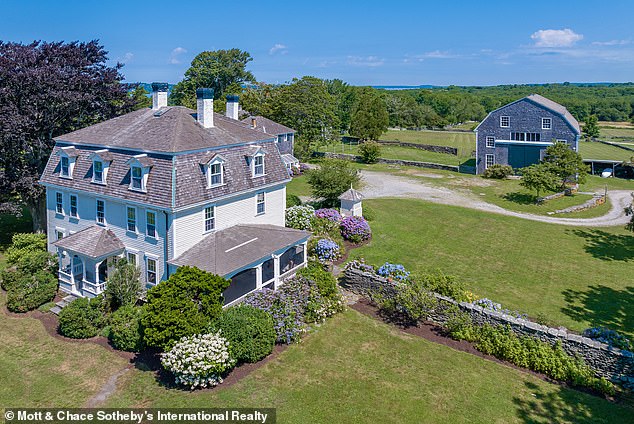
The farm has three houses, two barns and seven horse stables, as well as 84 idyllic hectares of rolling farmland
‘Welcome to Fogland Farm, a historic gem cherished by only three families in its 295 years of existence,’ the new list currently listed at Sotheby’s.
‘This striking estate covers 84 hectares of rolling farmland, complete with three houses, two stables and two building sites.
“The 1730 Georgian-style home stands proudly on a rise, offering panoramic views of Nonquit Pond to the east,” the article said.
In the distance, the Sakonnet River and the Atlantic Ocean can be seen to the south, write listing agents Liz Kinnane and Cherry Arnold — all from the “stately” main residence, which has 8 bedrooms, 3.5 bathrooms and 4,565 square feet of living space.
It also features two parlors, a living room, four fireplaces, and a screened porch overlooking the east side of the estate. There are also two additional houses built in 1900 by the second owner, the Batemans of nearby Newport.
They complement the main house with a cozy one-bedroom, one-bath Cape — a low, wide, single- or double-story building with a moderately steep roof — and a “quaint” two-bedroom, one-bath ranch house.
The surrounding farm is perfect for horse lovers, the agents add — referring to the 12,000-square-foot horse stable with an indoor ice rink and high ceilings for show jumping.
There are also 15 stables for the horses and a heated tack room to keep them warm, as well as a 265m² barn with a Gambrel roof and a further seven stables.
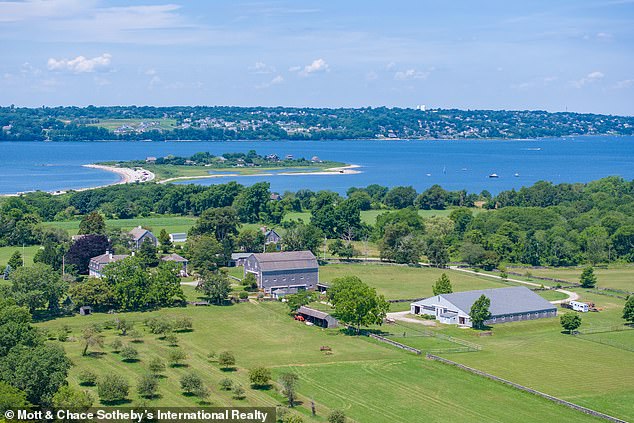
The farm is perfect for horse lovers, with plenty of space for the animals to ride and roam
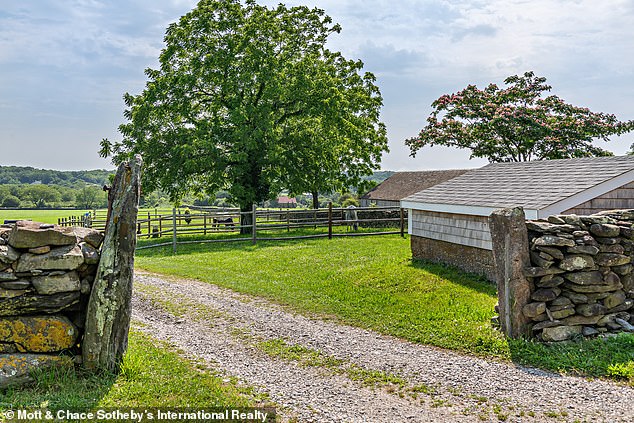
“Ideally located near Fogland Beaches, Tiverton Four Corners and Little Compton, Fogland Farm,” the listing says, the home offers “a unique opportunity to own a piece of New England heritage.”
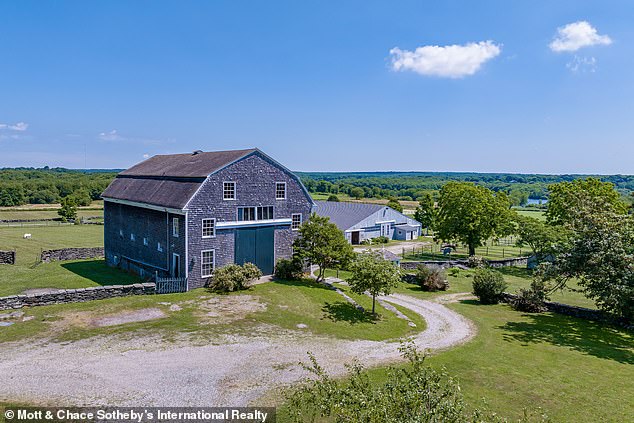
The main stable has 15 stalls to house the horses, as well as a heated tack room to keep them warm
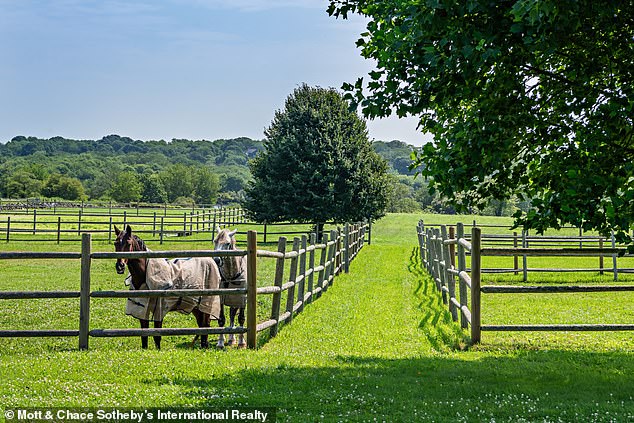
In total, the estate has two horse stables, with space for many horses
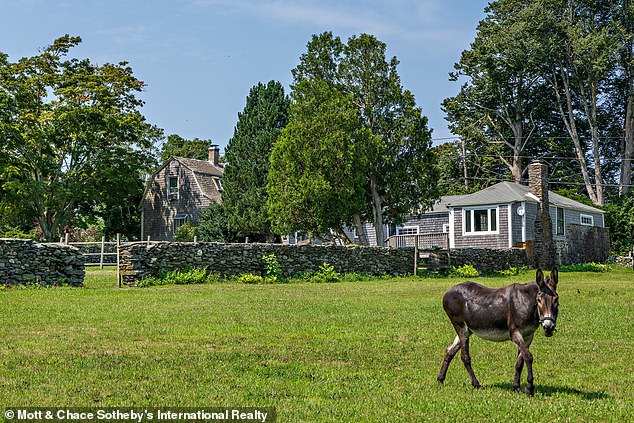
Its history dates back to a time when there were only 12 colonies before Georgia joined in 1733. Ironically, the house was built in the Georgian Revival style
There is also a smaller two-story barn, but it is currently used as an art studio, the agents said.
Their post goes on to note how the grounds are adorned with historic exterior features such as stone walls, apple and blueberry orchards, and open fields, which will no doubt take the new owners back to a simpler time.
There are also ‘turn-outs’ for riding, a term for special pastures and fields where the animals can roam.
“The home is ideally located near Fogland Beaches, Tiverton Four Corners and Little Compton, Fogland Farm,” the listing says. It offers “a unique opportunity to own a piece of New England heritage.”
That history goes back to the time when there were only 12 colonies. Georgia was added to the colony only three years later, in 1733.
Thirty-three years earlier, Captain John Cook, one of the area’s first settlers and a police officer, had purchased the land before his son began building on it in 1730.
The result was a house of beams and posts, which he eventually left to his own son John, later a colonel.
He served in the Second Newport Regiment for four years before ultimately surviving the war and dying in Newport in 1812 at the age of 67.
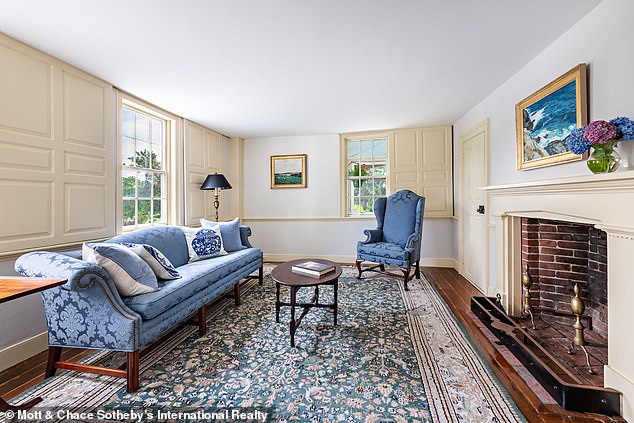
Recently renovated to match the interior of the 84 acres surrounding it
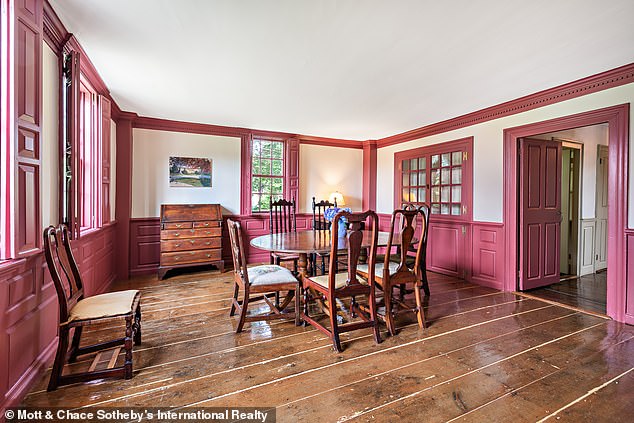
But it still manages to stay true to its colonial roots, with embellishments reminiscent of a bygone era
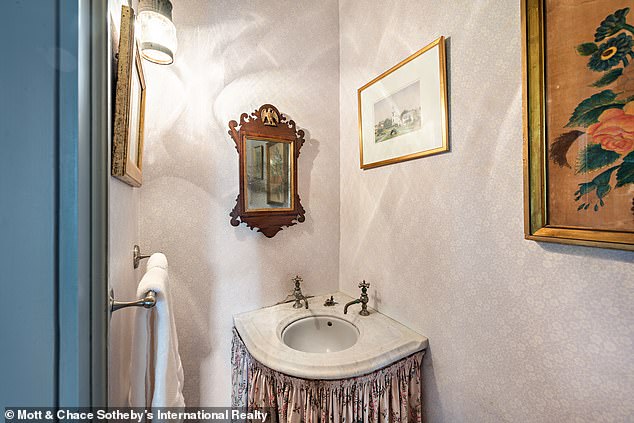
The house is still standing. One of the many bathrooms can be seen here
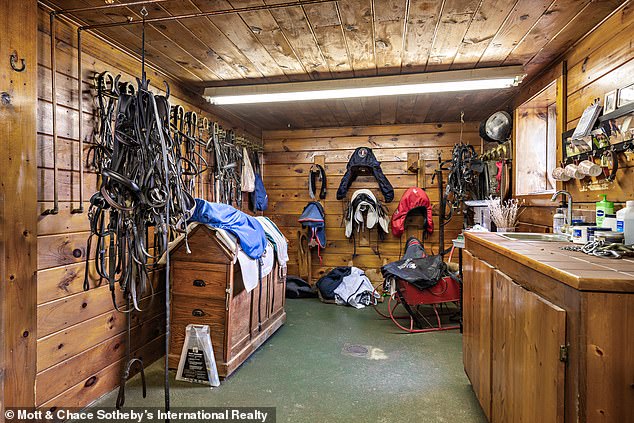
Inside one of the horse stables at ‘Fogland Farm’, also known as the Cook-Bateman House, named after the first two families who owned it
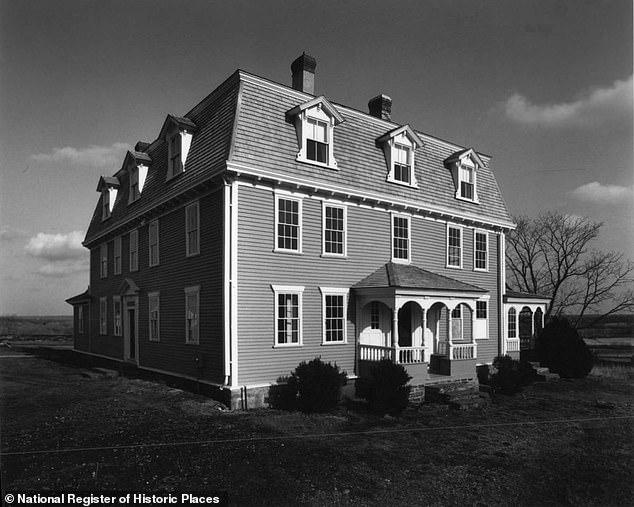
The result is the house seen here in the mid-nineteenth century – a testament to all that has stood the test of time
His family would own the farm until 1819, when it was purchased by William Bateman of Newport.
Bateman was praised for transforming Tiverton town centre into a hub and kept the house in his family for the next 150 years.
Ownership was then transferred to the Taradashes, whose patriarch acted as his own carpenter to save money and restore the then dilapidated house.
He told Fortune Magazine of the subsequent facelift, “We went from crisis to crisis,” but by 1981, after more than $200,000 had been poured into the project, the house was finished.
“If I had to do it over again, I wouldn’t do it,” Bernie Taradash told the publication at the time. “It was a more overwhelming experience than I realized, but once you commit, there’s no going back.”
The result is the house that still stands today: proof that something has stood the test of time.
And it can be yours, if you have $6 million to spare.
